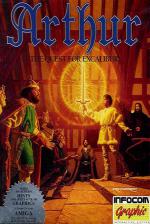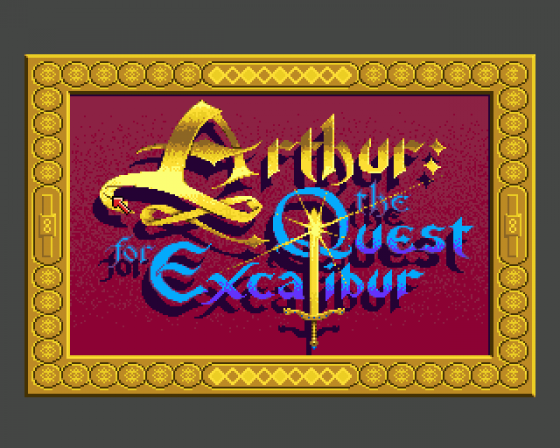
C&VG
 1st October 1989
1st October 1989
Categories: Review: Software
Publisher: Infocom
Machine: Amiga 500
Published in Computer & Video Games #95
Arthur
Infocom has, from the beginning, had the uncanny knack of stamping its own brand of humour and puzzles on an adventure, irrespective of the underlying story. An Infocom adventure, whether it be a whodunnit or a science fiction thriller, can always be recognised, and its entertainment value almost always guaranteed.
Arthur, based on a mixture of legend and history, is no exception. Written by Bob Bates, whose last game was Sherlock (Not the Melbourne House game!), Arthur starts with you as the young heir to the throne, witnessing King Lot stealing Excalibur, stone and all, and substituting a replica, thus claiming the throne for himself.
Your quest is to eventually expose him, and withdraw Excalibur from the stone yourself to regain your inheritance. But Merlin insists that you first go out and gain wisdom and experience, and become known to your people for your chivalry. The scoring system awards points for all these categories, and also for the quest itself. Though don't be mislead into thinking Arthur is a role playing game - it is an orthodox adventure.
An early visit to Merlin provides you with the key to overcoming many of the problems encountered in your pursuit of the throne. He bestows upon you the ability to transform yourself into different creatures: badger, owl, eel, turtle, and salamander. Around this magical power are based some very intriguing puzzles.
You can get into the castle for example as either a badger or an owl, but since you can't carry anything in those forms, you must leave in human form if you find any useful objects you want to take away. Only one problem here - how do you discover the password to get past the guard on the gate? And if you thought mazes were a thing of the past, the badger's den, consisting of twisty little passages all alike with exists in all directions may have you wondering if you're playing Colossal Caves by mistake. Except that, in this maze, you are a badger, and a badger cannot carry any objects with which to mark the rooms...
The third graphical Infocom adventure, Arthur has a different look from either Zork Zero or Shogun. The title bar is positioned halfway down the screen, displaying location, life form, and time of day. Below that, the text part of the game is played, whilst above it the player has a choice of a cameo graphic of the location set in an heraldic banner, or alternatively, a mouse-operated interactive map. This allows movement by clicking, whilst not obscuring the text, as was the case in Zork Zero.
A hint system is built into the game following the usual format with one or two notable exceptions. The range of hints available increases to meet the player's needs at any given time. This means you won't start seeing clues for puzzles you have not yet come across, nor for puzzles that you are not yet in a position to solve. As comprehensive as they are, however, some hints do not give a complete answer, and leave the player to do at least some figuring out for himself.
It was the built-in hints that confirmed what I had suspected was a bug. In human form I was having difficulty in persuading my rescued prisoner to venture out into the castle courtyard, where he was frightened he would be recognised. A disguise of some sort seemed to be required, and this, indeed, was confirmed by the hint. But before reading the hint, I had accomplished the same thing by flying out as an owl, where he was quite willing to follow.
Still, buglets like this are the lifeblood of adventures, and it in no way detracted from a game that I feel ranks amongst the best from Infocom.
Amiga
One of the best text-only adventures yet released - definitely one for traditional adventure fans to watch out for.
Other Reviews Of Arthur: The Quest For Excalibur For The Amiga 500
Arthur (Infocom)
A review
Arthur: The Quest For Excalibur (Infocom)
A review by Keith Campbell (Commodore User)



